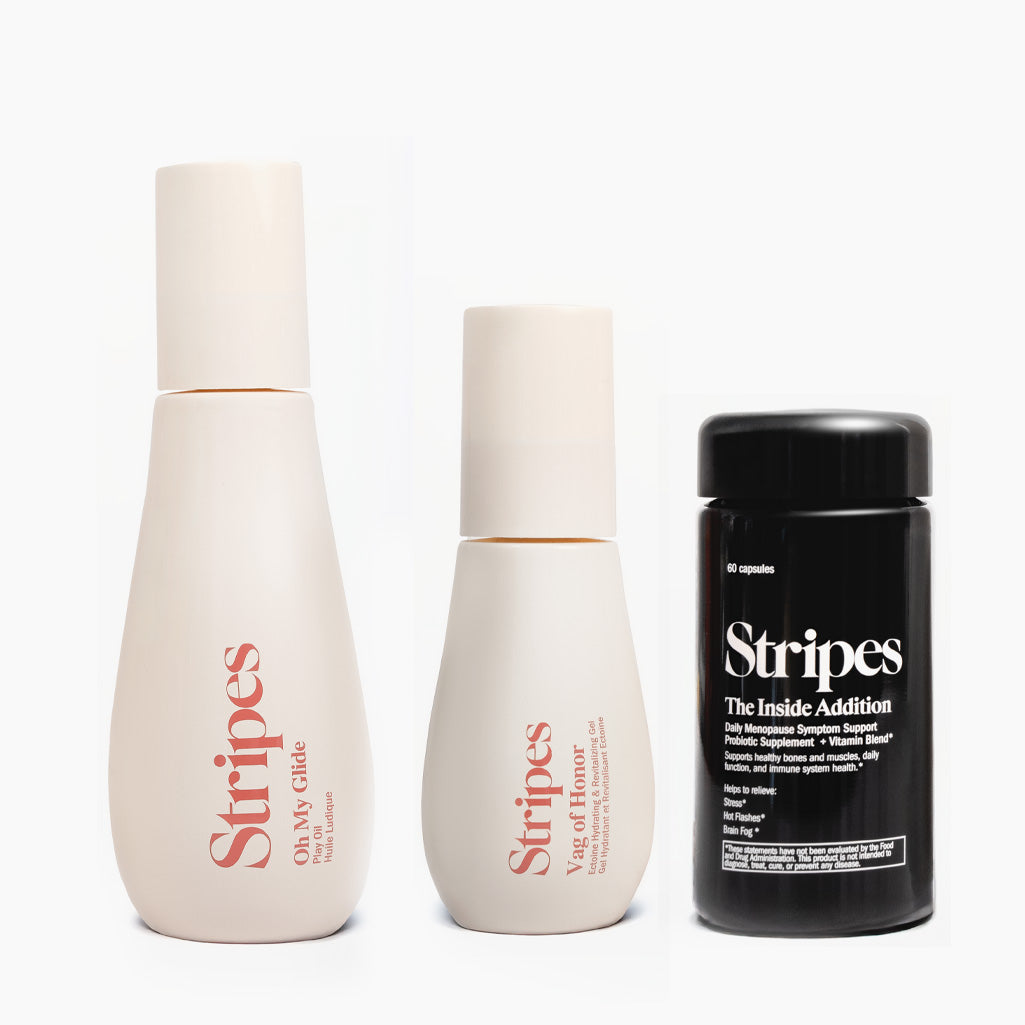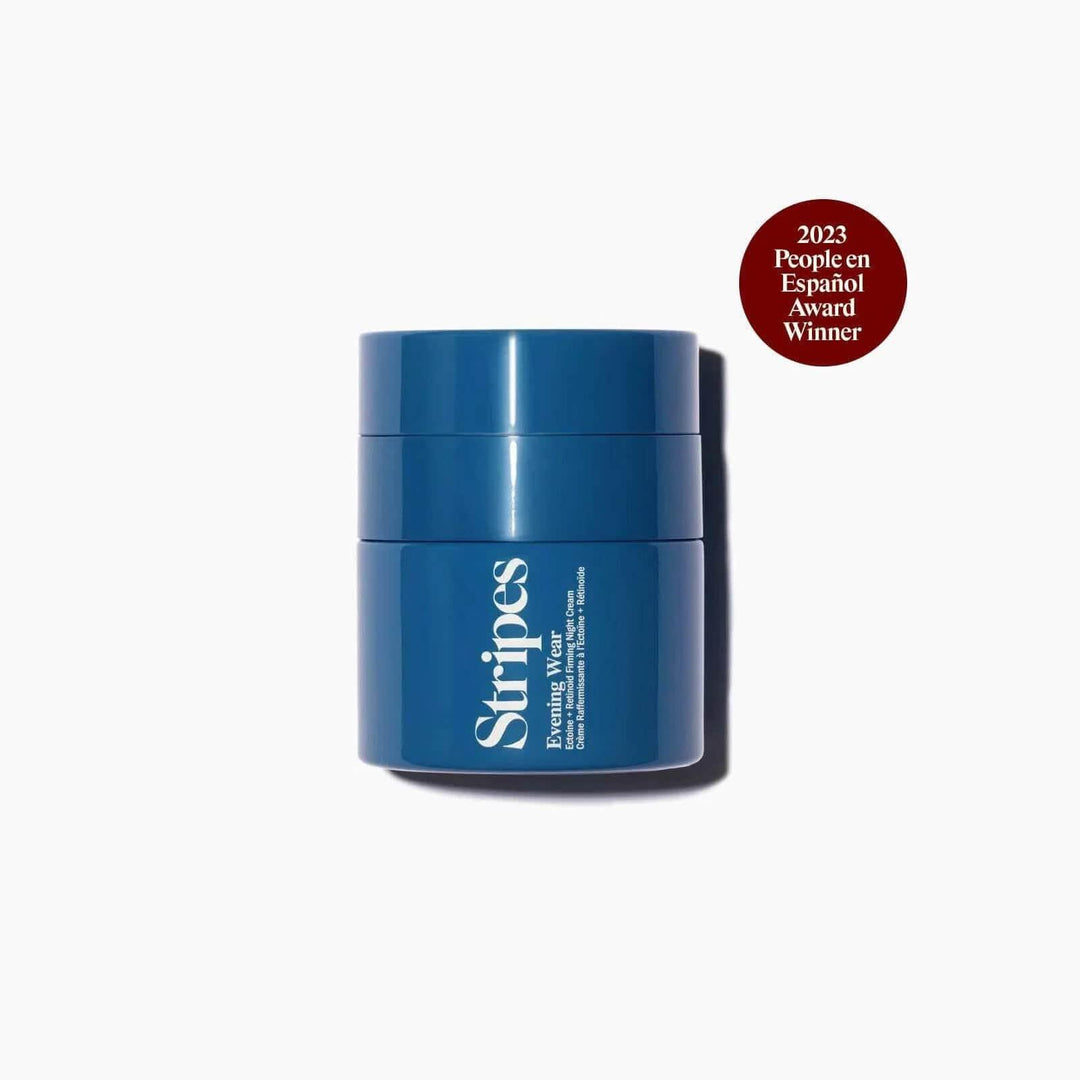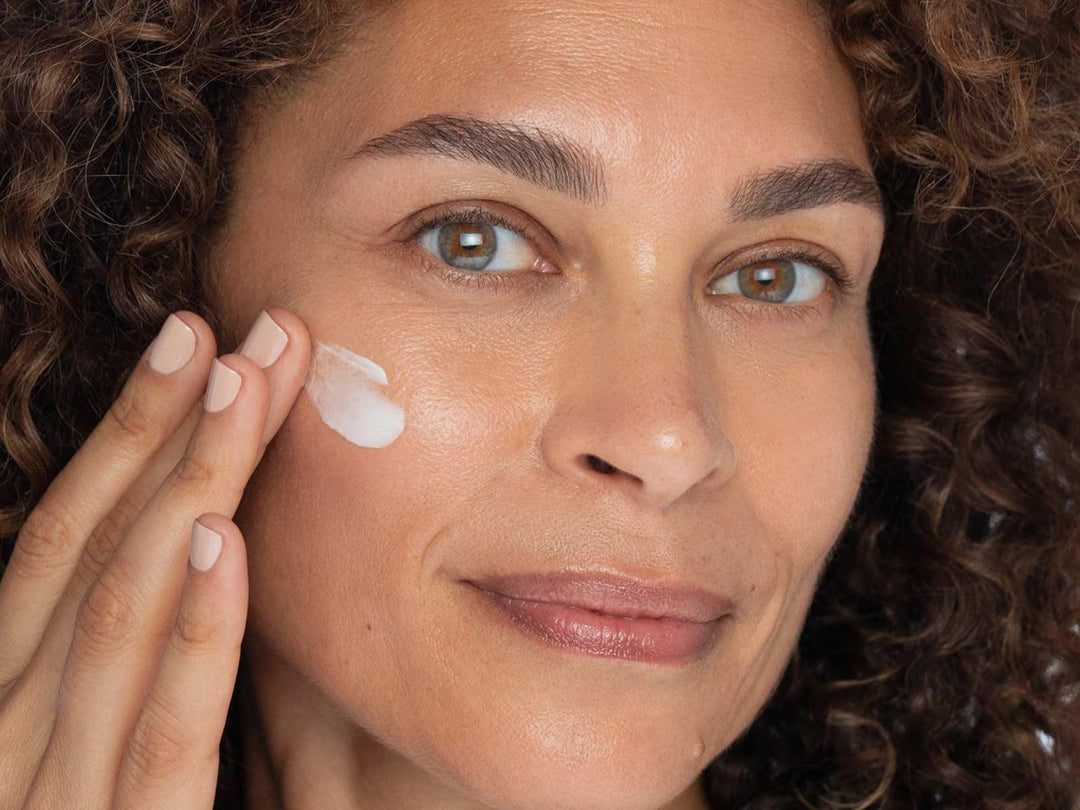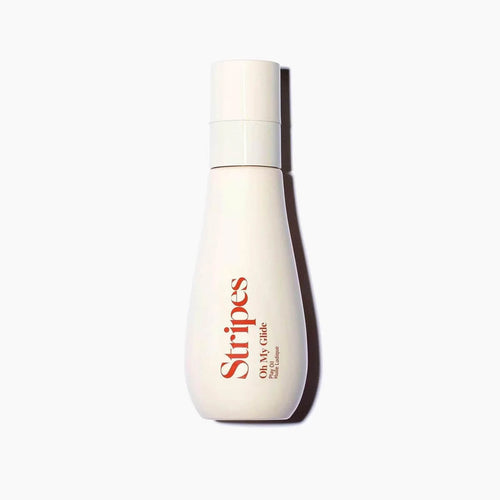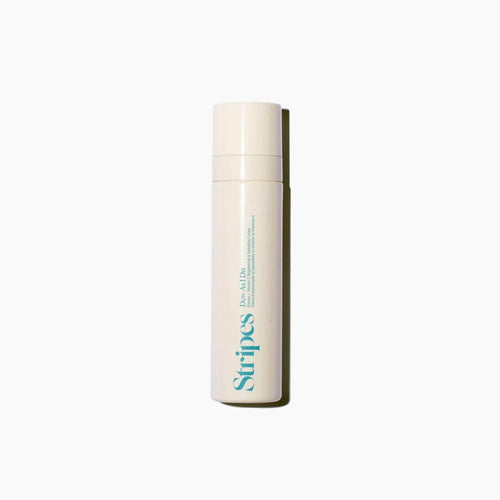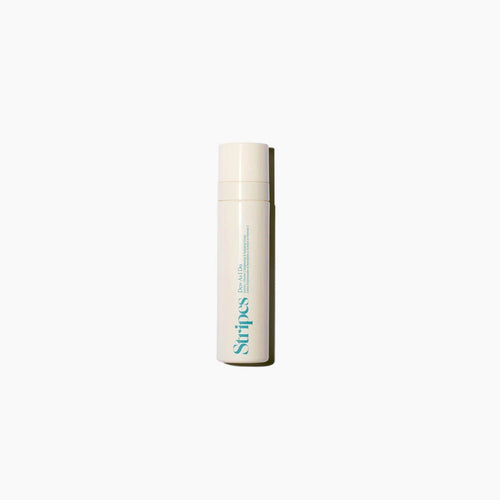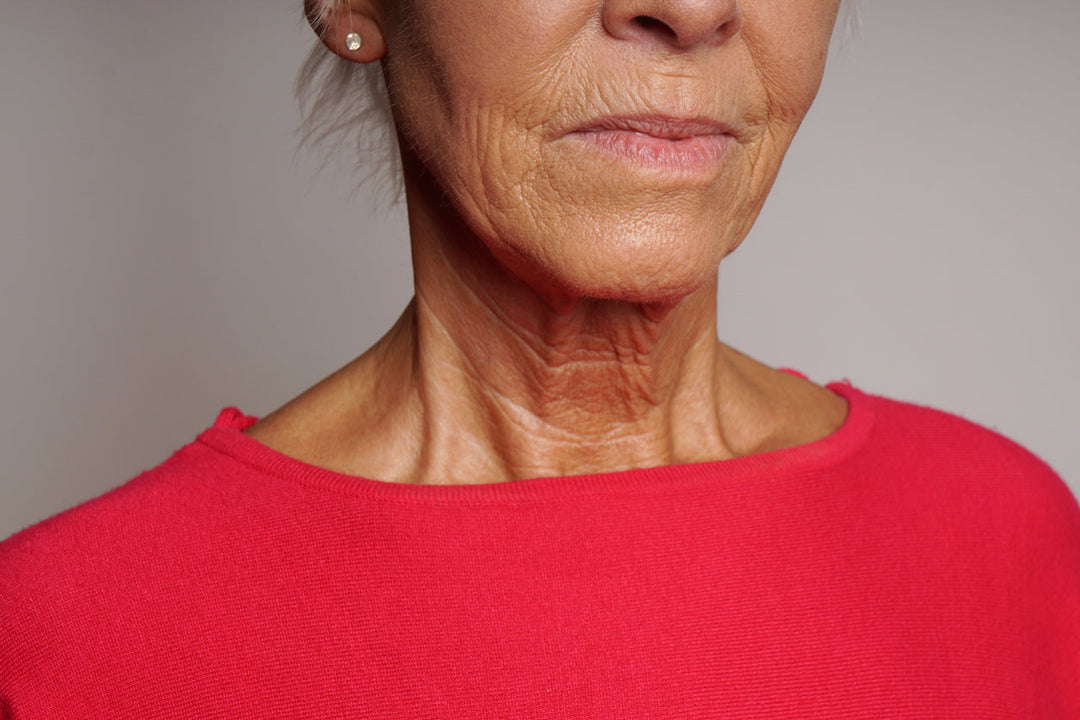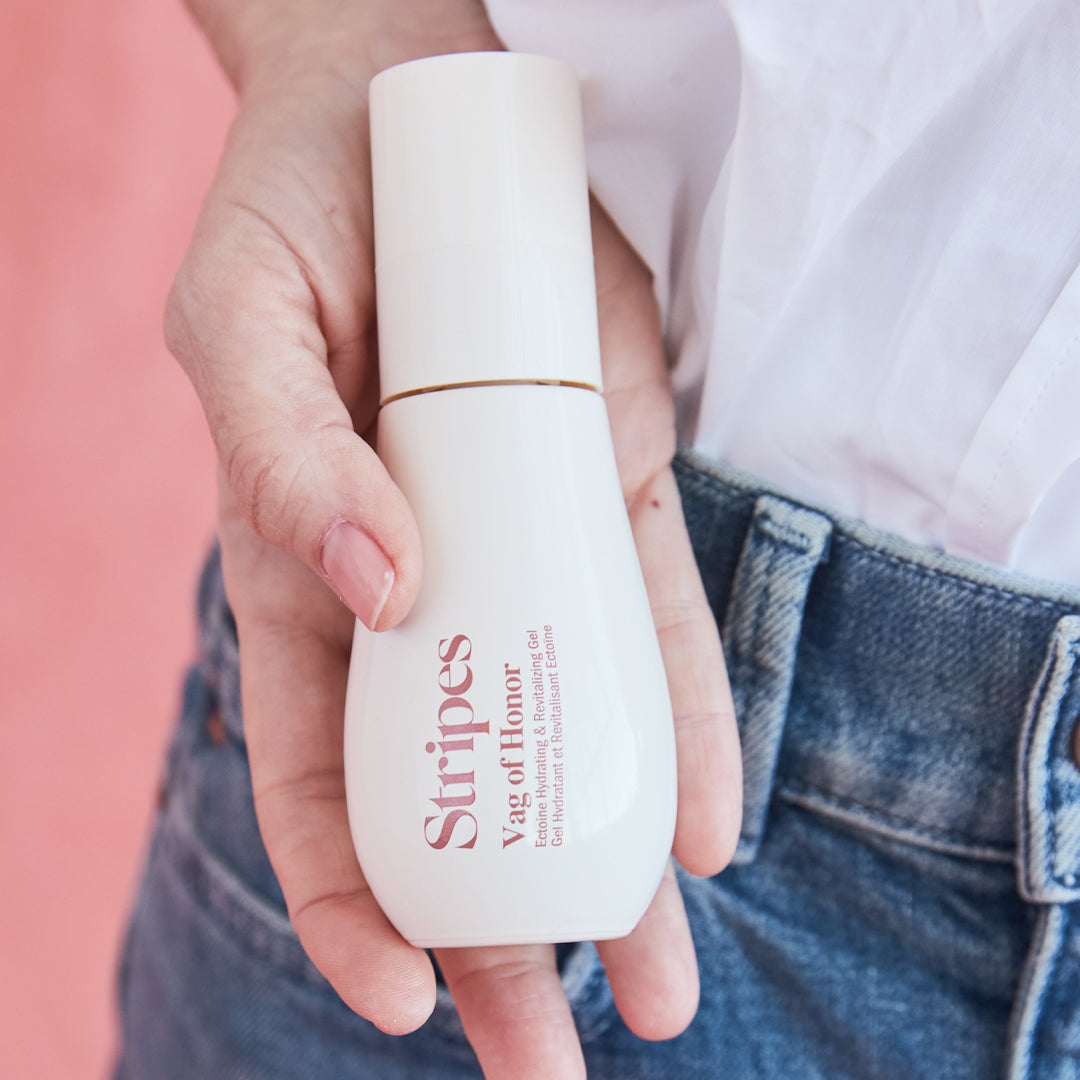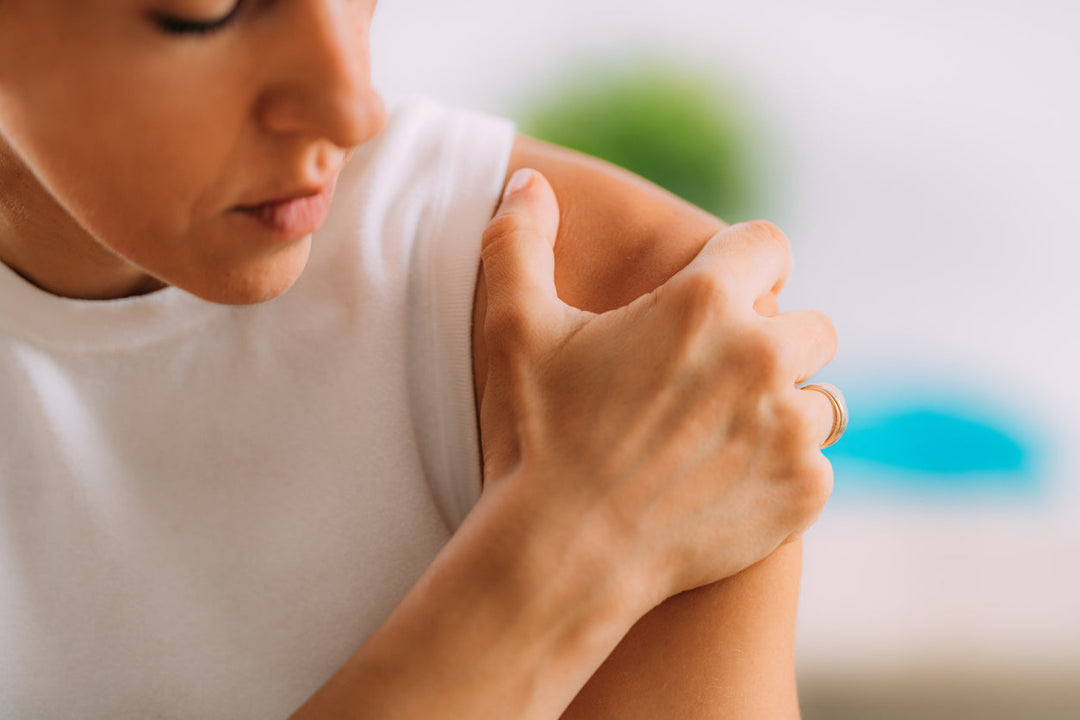Crepey Neck: What It Is and How to Treat It
If you've ever looked in the mirror and noticed that the skin on your neck looks a bit loose, thin, or wrinkly — kind of like crepe paper — you’re not alone. (Even the author Nora Ephron famously wrote, “I Feel Bad About My Neck.”) This aging phenomenon is commonly referred to as a crepey neck, and while it’s completely normal, that doesn’t mean you have to sit back and accept it.
Hormonal changes, especially around menopause, can contribute to crepey neck skin. During this time, estrogen levels drop, which can accelerate the breakdown of collagen and elastin — leading to that crinkled texture, particularly in delicate areas like the neck. Fortunately, there are lots of ways to smooth and strengthen that skin again.
Let’s break down what’s going on with crepey skin, why the neck is especially vulnerable, and what you can do to tighten, firm, and feel good about your neckline again.
What is a crepey neck?
“Crepey” skin refers to skin that has become thin, wrinkled, and loose — similar in texture to crepe paper (hence the name). Unlike regular wrinkles that tend to be deeper and more defined, crepey skin looks finely wrinkled and often comes with sagging or a loss of elasticity.
The neck area is particularly prone to becoming crepey because the skin here is thinner than many other parts of the body. It also tends to be overlooked when we apply sunscreen or moisturizers. Add to that the constant motion — turning your head, looking down at your phone, or just sleeping — and you’ve got a recipe for skin that starts to stretch and lose firmness over time.
What causes a crepey neck?
A few key factors contribute to the crepey look:
Aging
As we age, our bodies produce less collagen and elastin, which are responsible for keeping skin firm and springy. This natural decline starts early — around your mid-20s — and accelerates over time. Hormonal shifts, especially during menopause, further speed up this process, making the skin more fragile and less resilient. According to scientific studies, collagen production declines by about 1% per year starting in your 20s.
Sun damage
Chronic sun exposure is another big factor. UV rays degrade collagen and elastin fibers, weakening the skin’s support structure. Unfortunately, the neck is often neglected when applying SPF, making it one of the first places to show signs of photoaging. A study published in Clinical, Cosmetic and Investigational Dermatology highlighted UV exposure as a major contributor to visible aging, especially in sun-exposed areas.
Weight fluctuations and lifestyle
Significant weight changes up or down can stretch the skin and compromise its elasticity. Add in factors like dehydration, smoking, a poor diet, and lack of sleep, and your skin is under even more stress. These habits affect circulation and cell turnover, which are crucial for keeping skin smooth and firm.
How to treat a crepey neck
The good news? There are plenty of effective treatments, both at-home and professional, that can help improve the appearance of crepey skin.

Topical skincare
Look for ingredients like retinol, peptides, hyaluronic acid, and vitamin C. Retinol helps encourage collagen production and improve texture over time. Peptides support the skin’s structure, while hyaluronic acid draws in moisture, giving the skin a plumper, more youthful appearance. Vitamin C, on the other hand, provides antioxidant protection and helps brighten dull skin. And always apply your facial skincare products to your neck. Evening Wear is a firming cream with a gentle retinoid that will help improve the appearance of crepey skin over time.
Non-surgical in-office treatments
For those looking for more dramatic results, there are non-invasive procedures that can make a real difference. Microneedling boosts collagen production by creating tiny micro-injuries that trigger the skin’s healing response. Radiofrequency and laser therapies use heat to stimulate tightening and resurfacing. And injectables can smooth and lift sagging skin in strategic areas. A study in Lasers in Surgery and Medicine found that fractional laser treatments significantly improve skin texture and elasticity in the neck area.
Healthy habits that help
Hydration plays a bigger role than you might think. Drinking enough water helps keep the skin supple from within. Also, applying SPF daily — yes, even on cloudy days — can help prevent further collagen breakdown. Try to sleep on your back if you can, which helps prevent skin folds overnight. And a diet rich in antioxidants, healthy fats, and collagen-boosting nutrients like vitamin C and zinc will support your skin’s repair and regeneration processes.
Prevention tips
Even if crepey skin has already shown up, it’s never too late to slow its progression. Starting in your 30s or 40s, make it a habit to treat your neck like your face — cleanse it, moisturize it, and protect it. Pay attention to how often you’re looking down at your phone (hello, tech neck), and give your skin a little love every day. Small steps now can lead to smoother skin down the line.

When to see a dermatologist
If over-the-counter creams and serums aren’t giving you the results you want, a board-certified dermatologist can offer tailored options based on your skin type and goals. Often, a combination of treatments works best — think of it as a skin support team that tackles texture, tone, and elasticity from all angles.
Crepey neck skin might be common, but that doesn’t mean you have to live with it. From targeted skincare to high-tech treatments, there are more options than ever to firm, smooth, and refresh your skin. Whether it’s hormonal changes like menopause, sun exposure, or just the passage of time, there’s always a way to reclaim your confidence — neck and all.
